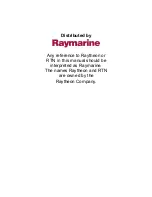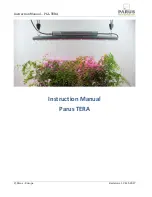
19
A FINISHING TIP
If you are finishing a piece with a spray finish, such as laquer, you may want
to spray with the lathe off, and cover the chuck with some kind of protective
shield. You can then remove the shield after spraying, turn the lathe on, and
finish buffing with a rag or chips. Covering the chuck while spraying, will
prevent it from becoming sticky and gumming up the scroll and jaws. This
will ultimately keep your chuck running with smooth and easy action.
MAXIMIZING YOUR GRIPPING POWER
If turning a large piece of square stock, (especially if it is end grain) it is a
good idea to initially chuck the "good" end. A spigot can be turned on the
other end. The piece can then be turned around and gripped on the spigot.
This is done for two good reasons. Firstly, the spigot can be turned small
enough so that when it is chucked, the base jaws remain inside the diameter
of the body, which reduces the risk of knuckles being injured if a catch
occurs when working close to the chuck. Secondly, when holding in a spigot
of the ideal diameter, you are also maximizing your gripping power.
TO MAKE TOPS or similar small components, simply mount a suitable
piece of stock, square or preferably round. Due to the unique jaw shape,
good holding will be achieved in either case. For tops, turn the point which
will be in contact with the surface when spinning. You can then work
towards the chuck, turning the spindle of the top, and part off.
18
cially appropriate when you don't want a foot, or tenon and don't have a
means to turn it off. This method is also less wasteful if you are working
with exotic or expensive wood, or if your blank is just the right size and you
can't afford to waste wood on an unwanted spigot that you have to turn off
later.
ONEWAY
suggests using hot melt glue on dry wood (this glue will not
work on wet wood). Glue blocks can usually be knocked off - if you have
trouble getting the glue block off, use a heat gun to soften the glue and then
knock the glue block off. If working with wet wood,
ONEWAY
suggests
using cyanoacralate. If you are using cyanoacralate, it will be necessary to
part off or waste away the glue block.
Do you ever have
trouble telling your
right hand screws
from your left hand
screws? The threads of
right hand screws
point up towards the
right, while the threads
of left had screws
point up towards the
left.
RIGHT
HAND
(INBOARD)
LEFT
HAND
(OUTBOARD)
Differentiating Left from Right Handed Screws































